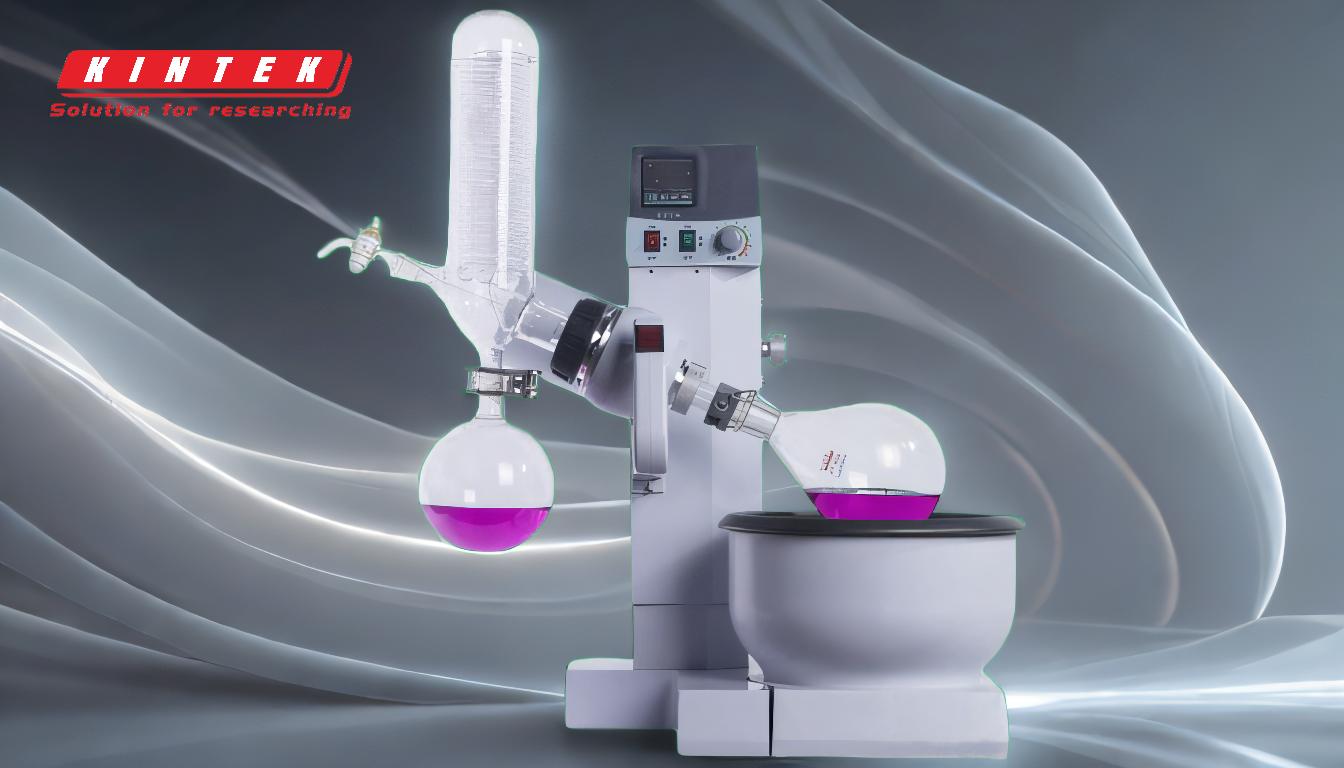Evaporating ethanol using a rotary evaporator involves a systematic process that ensures efficient and safe removal of the solvent. The key steps include setting up the equipment, adjusting the vacuum and rotation speed, heating the solution, and monitoring the evaporation process. The goal is to lower the boiling point of ethanol by reducing pressure, increase its surface area through rotation, and apply controlled heat to facilitate evaporation. Once the ethanol is fully evaporated, the system is returned to atmospheric pressure, and the flask is safely removed. Below is a detailed breakdown of the process.
Key Points Explained:

-
Preparation of the Rotary Evaporator Setup
- Ensure the water bath is preheated to the appropriate temperature for ethanol evaporation (typically around 40-50°C, as ethanol has a lower boiling point under reduced pressure).
- Check that the condenser is cold, usually by circulating coolant or water, to ensure efficient condensation of evaporated ethanol.
- Empty the solvent trap to avoid contamination from residual solvents.
- Secure the sample flask containing the ethanol solution and attach a bump trap to prevent splashing or bumping during evaporation.
-
Activating the Rotary Evaporator
- Start the rotation of the flask at a speed suitable for the volume of the solution. A moderate speed (50-160 rpm) is typically recommended to create an even coating of the solution on the flask’s inner surface, maximizing the evaporation area.
- Gradually apply vacuum using a vacuum pump or aspirator. The pressure should be reduced to around 400-600 mm Hg, which lowers the boiling point of ethanol, allowing it to evaporate at a lower temperature.
-
Monitoring the Evaporation Process
- Lower the flask into the preheated water bath to apply controlled heat, which accelerates the evaporation process.
- Observe the solution for signs of boiling or bubbling. If excessive bubbling occurs, reduce the vacuum pressure slightly to prevent bumping.
- Monitor the collection of ethanol in the receiving flask, ensuring that the solvent is being efficiently condensed and collected.
-
Completing the Evaporation
- Once all the ethanol has evaporated (indicated by no further condensation in the receiving flask), raise the flask out of the water bath to stop heating.
- Stop the rotation of the flask and turn off the vacuum pump.
- Carefully release the vacuum by opening the stopcock or venting valve to return the system to atmospheric pressure.
- Remove the flask from the rotary evaporator, ensuring it is securely handled to avoid spills or accidents.
-
Safety and Efficiency Considerations
- Always use a bump trap to prevent splashing of the solution, which can lead to contamination or loss of sample.
- Avoid overheating the solution, as this can cause degradation of heat-sensitive compounds or excessive bumping.
- Regularly check the condenser and water bath to ensure they are functioning properly throughout the process.
- After use, clean the equipment to maintain its performance and prevent cross-contamination in future experiments.
By following these steps, ethanol can be effectively and safely evaporated using a rotary evaporator. The process leverages reduced pressure, controlled heat, and rotational motion to optimize solvent removal while minimizing the risk of sample loss or damage.
Summary Table:
| Step | Key Actions |
|---|---|
| 1. Preparation | - Preheat water bath (40-50°C). - Ensure condenser is cold. - Secure flask and attach bump trap. |
| 2. Activation | - Start rotation (50-160 rpm). - Apply vacuum (400-600 mm Hg). |
| 3. Monitoring | - Lower flask into water bath. - Observe boiling and condensation. |
| 4. Completion | - Stop heating and rotation. - Release vacuum and remove flask safely. |
| 5. Safety Considerations | - Use bump trap. - Avoid overheating. - Clean equipment after use. |
Need help with your rotary evaporator setup? Contact our experts today for personalized guidance!









